Início EUD O que é a UE? Instituições da União Europeia Comissão Europeia European Disability Strategy Objectives of the Strategy
Objectives of the Strategy
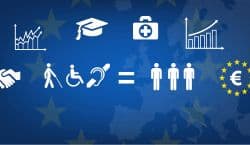
The Strategy is divided into eight main areas for action: Accessibility, Participation, Equality, Employment, Education and training, Social Protection, Health, and External Action. Based on the description within these areas of action, specific questions and examples were asked to EUD’s members to find concrete examples of good and bad practice.
Table of Contents
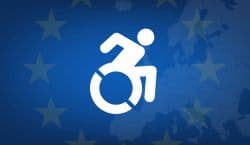
Accessibility
The Strategy describes this area of action to work to “ensure accessibility to goods, services including public services and assistive devices for persons with disabilities”.
Accessibility for public websites for deaf means for example providing for information in Sign Language[1] on public websites, as this is where information on public services are usually provided for making it essential to fully enjoy and independent life as a citizen. However, only 9 per cent of the countries reply that many of the public websites have information in Sign Language.45per cent say this is provided for in only a few public websites and 41per cent find this not found in any public websites.
Accessibility on public TV channels means preferably programmes in national Sign Language, Sign Language interpreting or at least subtitling. This survey focused in interpreting and subtitling. Sign Language interpreting is found in many programmes in only 5 per cent of the countries, whist the vast majority, in 90 per cent of the countries this is found in few programmes on public TV channels and in 5per cent this is not found at all. Regarding subtitling on programmes, this is found in many programmes in 60per cent of the countries, 35 per cent find it in few programmes and in 5 per cent of the countries this is not provided for at all.
One needs to understand that accessibility is a wide concept including also linguistic and cultural accessibility. This means sign language environments with people using and mastering some national sign language in work places, schools, different educational environments, learning materials and different media in sign language, meeting governmental officials who use sign language, and service providers etc. So, in this sense sign language interpreting services is much more nature of reasonable accommodation, and this alone cannot replace linguistic and cultural accessibility. Unfortunately, this survey does not cover this difference because of limited time and resources available.

- Many
- Few
- None
[1]There are 31 Sign Languages in the EU Member States. For more information, see: Wheatley, M. & Pabsch, A. (2012). Sign Language Legislation in the European Union – Edition II. Brussels: EUD. https://www.eud.eu/publications/books

Participation
According to the strategy, participation means to“achieve full participation of people with disabilities in society by: enabling them to enjoy all the benefits of EU citizenship, removing administrative and attitudinal barriers to full and equal participation, providing quality community-based services, including access to personal assistance.”
Participation on equal rights for all includes access to information or interpreting in Sign Language in sport events, cultural events and political events and/or elections.Accessibility at museums, art shows, religious services, family events and city tours can to some extent be found in all the countries that have replied to our survey but it is very limited to how often or in which situations. In all cases the deaf person has to ask for it him/herself beforehand and it is more often, although still very limited to once or twice per year, to museums or religious services and then only provided for in the capital or the biggest city/cities of the country. This change has also improved thanks to the lobby work of the deaf association and on the initiative of the museum or organisers themselves and it does not come from an ‘official’ authority. With new technology it is becoming more common for some museums to offer information in Sign Language downloadable via smart phones and tablets. For sport events it is more difficult for deaf persons to be entitled to interpreter and some members feel support in related to disability rights tends to be more established for persons with physical disabilities.
National Election
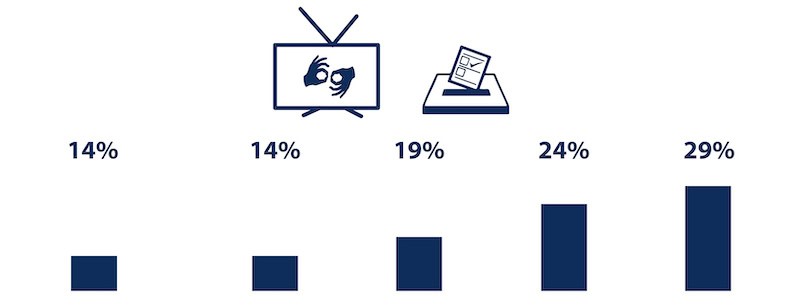
TV, elections process
and political parties
Political parties
Election process
TV
No information
Regarding accessibility in the most recent national political elections, in almost one third of the countries, in 29 per cent, no information in Sign Language was provided at all. Amongst the remaining countries where information in Sign Language was provided for this was limited to different aspects linked to the election. In 24 per cent, Sign Language interpretation was provided on public TV in political debates and/or in information and news about the election. In 19 per cent of the countries, information in Sign Language on the election process and practical information on when, where and how to vote was provided for by the national election authorities of the country on their website. In 14 per cent of the countries information in Sign Language from one or several political parties was available on the party’s own website. In 14 per cent of the countries, information in Sign Language from several aspects of the election was provided for meaning on debates on public TV, on political parties and/or practical information on how to vote.
EU Election
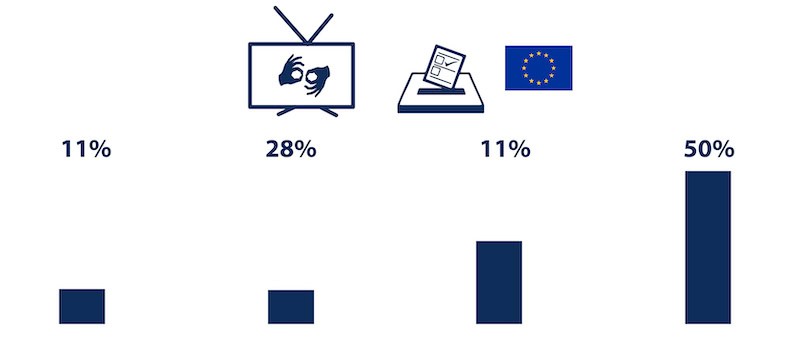
Political parties
Election process
TV
No information
Accessible information concerning the recent European Parliament election in 2014 was only provided for in half (50 per cent) of the EU Member States[1] meaning no information was given in half of the Member States. Practical information on the election process and when, where and how to vote was available in 28 per cent of the Member States and Sign Language interpreting was available on public TV debates and/or political news about the election in 11 per cent of the Member States. In 11 per cent of the Member States, information in Sign Language was available on the political parties or candidates’ websites.
[1] Iceland, Norway and Switzerland replied to this survey but they are not part of the EU meaning they were not included in this question nor in the statistics provided in this paragraph.
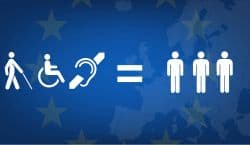
Equality
Equality is described in the Strategy as to“eradicate discrimination on grounds of disability in the EU.”
According to all our members who replied to the survey, the most common situation of discrimination against deaf people are mainly linked to employment and education due to lack of Sign Language interpreters available and the low financial resources given to provide interpreting including qualified trainings of interpreters and budget for paying for interpreters. The second and third most common barrier faced is lack of information and communication in sign language linked to emergency services and then information in media.

Employment
The aim of the area of action Employment is to “enable many more people with disabilities to earn their living on the open labour market.”
Access to Sign Language interpreting at the work place is essential for full inclusion, participation and equality. In 33 per cent of the countries, deaf people are entitled to Sign Language interpreting at the work place as much as needed according to the law. However, this is in most of these cases depending on the availability of interpreters, which is limited in these cases making the legal flawed in reality. Even if the political will is there to give rights to interpreting, the political will to allocate funding for academic training for interpreters must also be in place for the law to work in practice. In 5 per cent, interpreting is available for up to 20 hours per week at the work place.
In 38 per cent of the countries, Sign Language interpreting is provided for but only up to maximum 8 hours per week. These hours are in many countries also suppose to be used in all areas of life and not just in the work place, i.e. also for education, health care services, personal meetings etc. making the ratio for accessible work places even less. There are countries where deaf people only have the right to 0,5-1hour of interpreting per week.
In 14 per cent of the countries there is not a system to give deaf the right to interpreting but it is available in limited amount and decided upon on a individual bases more or less. No interpreting is at all provided for in 10 per cent of the countries.
The systems in the various countries of how to apply for Sign Language interpreting is also very mixed and sometimes makes it more difficult as it is up to the individual to apply from the national government and one can only apply for a certain amount of hours per application, meaning one needs to apply many times per year. It also varies in countries if it is the number of hours which one can apply for or the there is a time limit for how long you are entitled to interpreting.
Aside from Sign Language interpreting, there are a few examples where the government also allocated resources to companies for Sign Language training of other staff and/or technical equipment to facilitate communication at the work place.
Interpreting in employment
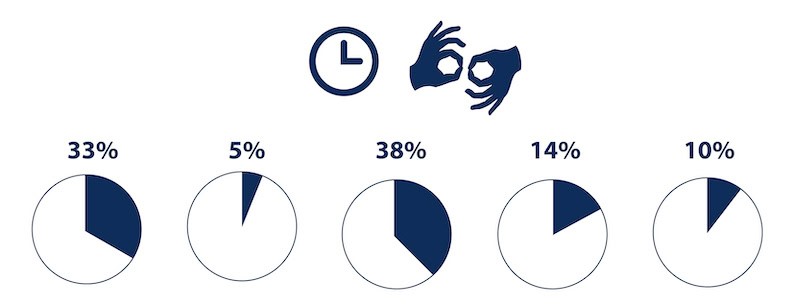
Unlimited
Max 20h/week
Max 8h/week
Limited and case by case
None
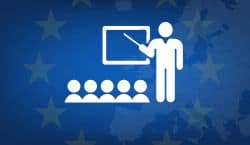
Education and training
Education and training targets to“promote inclusive education andlifelong learning for pupils and students with disabilities.”
Access to Sign Language interpreting for children/student in school is the key for integration, inclusion and participation as well as the choice for the best quality education, should it be in a mainstream school and not in a special deaf school. regardless of it is in between a special deaf school. According to the EUD survey, 29 per cent deaf children attend special deaf schools where Sign Language is the first language. For the others, in 28 per cent of the country Sign Language interpreting is legally available for unlimited hours during one week on the basis of the need of the individual child. Interpreting for between 10-20 hours per week is possible to receive in 10 per cent of the countries. In 14 per cent of the countries, interpreting is only possible to have in few and very limited hours per week. In 19 per cent of the countries, this is responsibility of the the regional/local government to decide and provide for meaning it varies a great deal within one country and can be regarded as decided upon on a case by case basis.
It is important to note that providing sign language interpreting at school is merely one aspect of accessibility in education, it does not equal inclusive education and reasonable accommodation in the full meaning. To ensure full inclusion and participation there is also linguistic and cultural accessibility aspects to consider and include as well as a sign language learning environment, learning material in sign languages, qualified teachers in sign language, sign language as a school subject etc. However, due to the limited time and resources for this survey it was not possible to fully report on all aspects of this in this document.
Deaf Schools
Mainstream schools with sign langauage interpreters

Unlimited
10-20h/week
Few/very limited h/week
Regional and case by case

Health
Interpreting in health care
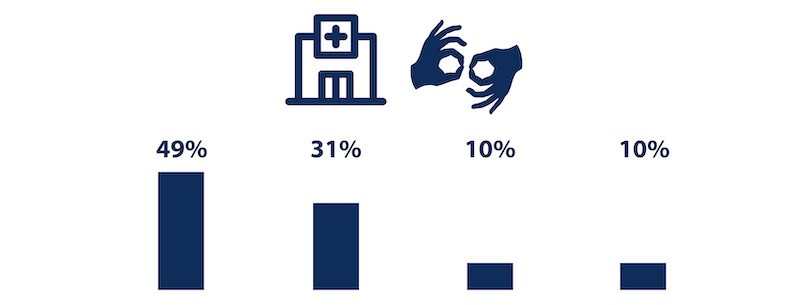
Unlimited
2-25h/month
Regional and case by case
Hospital and case by case
[1] For more information, see: http://www.signhealth.org.uk/health-information/sick-of-it-report/
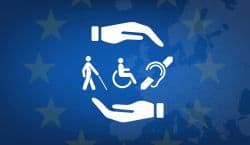
Social Protection and External Action
The Strategy also includes the area for action Social Protection, which aims to “promote decent living conditions for people with disabilities” and the area for action External Action is described to “promote the rights of people with disabilities within the EU external action.”As clearly pointed out in this consultation report, linguistic and cultural accessibility including access to Sign Language interpreter is the key for full inclusion and participation for deaf. This also goes for providing Social Protection as well as promoting this in the EU’s External Action work.







